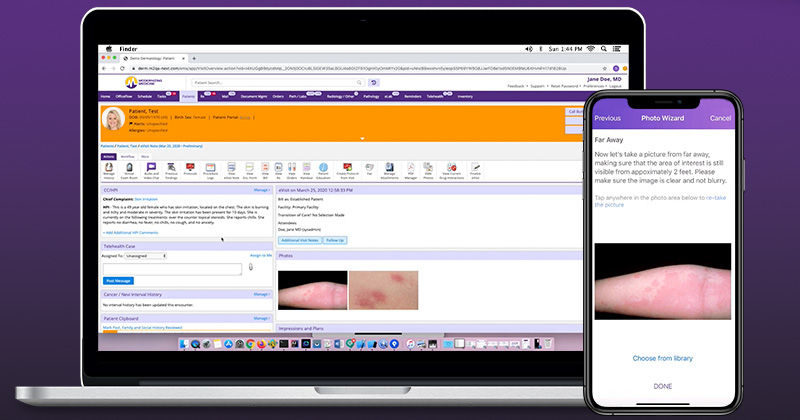Expanding Your Virtual Practice Experience With Patient Engagement Tools

Get the most out of what patient engagement tools have to offer you, your staff and your patients.
Since the outbreak of COVID-19, many medical practices have turned to telemedicine and other tech tools to continue offering patient care while reducing physical contact between patients and staff. But this adoption of technology is far from a short-term investment that practices should expect to abandon once the pandemic is officially over.
In fact, forward-thinking practices may want to consider expanding their virtual practice experience with patient engagement tools that empower patients to get more involved with their care and help their staff work more efficiently.
The Role of Patient Engagement Tools
The evolving healthcare landscape makes staying connected with patients more important now than ever before. And by leaning on the technology your patients use every day, keeping them engaged couldn’t get much easier.
Patient engagement tools let practices put more power in the hands of their patients to manage their care on their own time. A self-scheduling tool, for example, enables even the busiest patients to make their own appointments from their smartphone or PC without having to place a call to your office during business hours.
Another important tool that many practices now offer is a patient portal that lets patients view their exam notes, lab results and educational handouts online. They can also request prescription refills and stay in touch with your practice.
Communication is a key component of patient engagement, and it’s important for practices to offer multiple ways for patients to reach you. Besides the patient portals there are tools available that allow two-way messaging that’s as simple as a text, but also provide encryption. Reminding patients about upcoming appointments can also be as easy as sending an automated text.
It’s important to note that these tools do more than offer convenience for your patients, as your staff can also reap some benefits from patient engagement tools as well.
Some Benefits of Patient Engagement for Staff
While patient engagement tools create more opportunities for touch-points between your practice and your patients, the right tools can prevent these additional communications from adding to your staff’s hefty workload. Some tools can even help free up your staff to focus on other tasks.
One benefit your staff may see is an increase in productivity due to a reduction in call volume. When patients don’t have to call in to make or reschedule appointments or ask about lab results, and when staff doesn’t have to call to remind patients about appointments, those are precious minutes saved each day that can really add up.
Another way your staff can benefit is from automation and streamlining of workflows. If your practice uses a smart EHR that suggests ICD-10 and CPT codes during the appointment, the suggested codes are populated onto the bill for your review, modification and approval. And if you use a Practice Management system that creates, scrubs and submits the claim, not only could it support your staff during billing, it could also help with tracking and managing required follow-up.
The Virtual Practice in Action
In an ideal situation, a practice would use a full suite of patient engagement tools together, along with telehealth, to create a comprehensive virtual practice experience.
So what could your virtual practice look like? Imagine:
Your patients make their schedule on their own time – literally – by setting their appointments in just a few clicks on their phone or PC. Once they arrive for the appointment, the intake process could be short and sweet, with most of it completed by the patient online before they even get to your office.
Perhaps your practice allows patients to skip the waiting room and wait in the comfort of their car for their appointment. With a quick text, you can inform patients that their provider is ready to see them and let them go directly to the exam room.
Of course, telehealth appointments could still be an option. With telemedicine, you can offer your patients more convenience and flexibility, especially for patients who are rural, at-risk or have just had surgery.
Checkout could be easier, too. Whether your patients are seen in-person or through telehealth, you could offer a variety of ways for them to cover their co-pay or balance through their patient portal, text-to-pay or with a credit card saved on file.
Ready to see more ways your practice could benefit from going virtual?